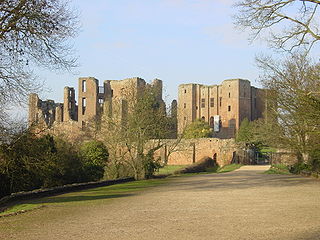
Kenilworth Castle is a castle in the town of Kenilworth in Warwickshire, England, managed by English Heritage; much of it is still in ruins. The castle was founded during the Norman conquest of England; with development through to the Tudor period. It has been described by the architectural historian Anthony Emery as "the finest surviving example of a semi-royal palace of the later middle ages, significant for its scale, form and quality of workmanship".

Victor-Marie Hugo, vicomte Hugo, sometimes nicknamed the Ocean Man, was a French Romantic writer and politician. During a literary career that spanned more than sixty years, he wrote in a variety of genres and forms.
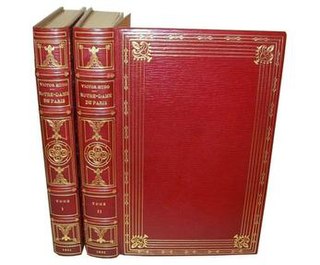
The Hunchback of Notre-Dame is a French Gothic novel by Victor Hugo, published in 1831. The title refers to the Notre-Dame Cathedral, which features prominently throughout the novel. It focuses on the unfortunate story of Quasimodo, the Roma street dancer Esmeralda and Quasimodo's guardian the Archdeacon Claude Frollo in 15th-century Paris. All its elements—the Renaissance setting, impossible love affairs and marginalized characters—make the work a model of the literary themes of Romanticism.
Flibbertigibbet is a Middle English word referring to a flighty or whimsical person, usually a young woman. In modern use, it is used as a slang term, especially in Yorkshire, for a gossipy or overly talkative person.

Amy, Lady Dudley was the first wife of Robert Dudley, Earl of Leicester, favourite of Elizabeth I of England. She is primarily known for her death by falling down a flight of stairs, the circumstances of which have often been regarded as suspicious. Amy Robsart was the only child of a substantial Norfolk gentleman. In the vernacular of the day, her name was spelled as Amye Duddley.

Andrew Halliday was a Scottish journalist and dramatist.

The Man Who Laughs is a novel by Victor Hugo, originally published in April 1869 under the French title L'Homme qui rit. It takes place in England beginning in 1690 and extends into the early 18th century reign of Queen Anne. It depicts England's royalty and aristocracy of the time as cruel and power-hungry. Hugo intended parallels with the France of Louis-Philippe and the Régence.
Kenilworth is a town in Warwickshire, England.

Kenilworth. A Romance is a historical romance novel by Sir Walter Scott, one of the Waverley novels, first published on 13 January 1821. Set in 1575, it leads up to the elaborate reception of Queen Elizabeth at Kenilworth Castle by the Earl of Leicester, who is complicit in the murder of his wife Amy Robsart at Cumnor.

Lilian Adelaide Neilson, born Elizabeth Ann Brown, was a British stage actress.

Il castello di Kenilworth is a melodramma serio or tragic opera in three acts by Gaetano Donizetti. Andrea Leone Tottola wrote the Italian libretto after Victor Hugo's play Amy Robsart (1828) and Eugène Scribe's play Leicester, both of which following from Sir Walter Scott's novel Kenilworth (1821). Daniel Auber composed another opera on the same subject, Leicester, ou Le chateau de Kenilworth in 1823.
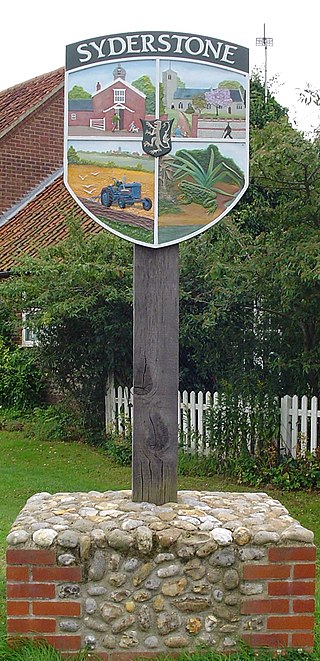
Syderstone is a civil parish in the English county of Norfolk, near the town of Fakenham. It has an area of 9.94 km2 (3.84 sq mi). The population of 532 in 224 households at the 2001 census fell to 445 at the 2011 Census.
The Langham letter, published by 1580, is a significant source for the entertainments of the Elizabethan period in England. Dated from Worcester on 20 August 1575, and titled A letter: whearin, part of the entertainment vntoo the Queenz Maiesty, at Killingwoorth Castl, in Warwik Sheer in this soomerz progress 1575. iz signified: from a freend officer attendant in the coourt, vntoo hiz freend a citizen, and merchaunt of London, it describes the summer 1575 entertainment of Elizabeth I of England by Robert Dudley, 1st Earl of Leicester, at Kenilworth Castle. It is addressed to Humfrey Martyn, the son of Sir Roger Martyn, a master of the Mercers' Company.

Robsart is an unincorporated hamlet within the rural municipality of Reno No. 51, in the province of Saskatchewan, Canada. Robsart had a population of 20 at the 2016 Canada Census. Robsart previously incorporated an independent village since 1912 until it was dissolved into an unincorporated community on January 1, 2002 under the jurisdiction of the rural municipality of Reno No. 51. Robsart is located 48 km southwest of the town of Eastend at the junction of Highway 18 and Highway 13 approximately 170 km south-east of Medicine Hat, Alberta, 68 km south of the Town of Maple Creek.
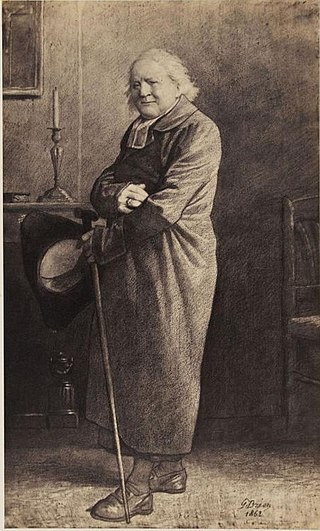
Bishop Charles-François-Bienvenu Myriel, referred to as Bishop Myriel or Monseigneur Bienvenu, is a fictional character in Victor Hugo's 1862 novel Les Misérables. Myriel is the Bishop of Digne in southeastern France.
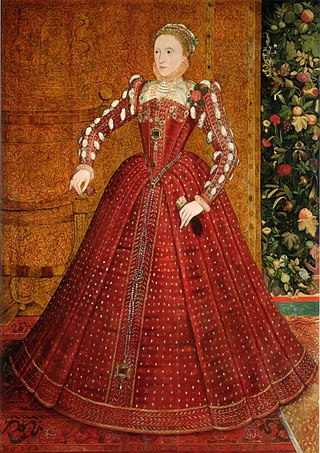
Elizabeth I of England has inspired artistic and cultural works for over four centuries. The following lists cover various media, enduring works of high art, and recent representations in popular culture, film and fiction. The entries represent portrayals that a reader has a reasonable chance of encountering rather than a complete catalogue.

Victor Hugo's novel Les Misérables has been the subject of many adaptations in various media since its original publication in 1862.
Ann Firbank is a British actress of film, television, and stage whose career extends from 1956. One of Firbank's more notable roles is her 1971 portrayal of Anne Elliot in the serial Persuasion, an adaptation of Jane Austen's novel of the same name.

Adèle Foucher was the wife of French writer Victor Hugo, with whom she was acquainted from childhood. Her affair with the critic Charles Augustin Sainte-Beuve became the raw material for Sainte-Beuve's 1834 novel, Volupté. Adèle wrote a biography of her husband, published in 1863.
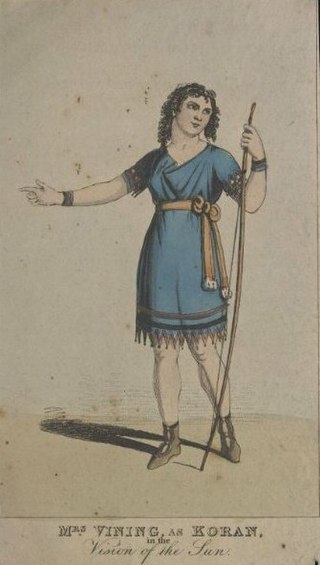
Mary Gossop Vining born Mary Johannot? aka Mrs Vining (1790–1868), was an English actress headlining at the Theatre Royal, Covent Garden.
















